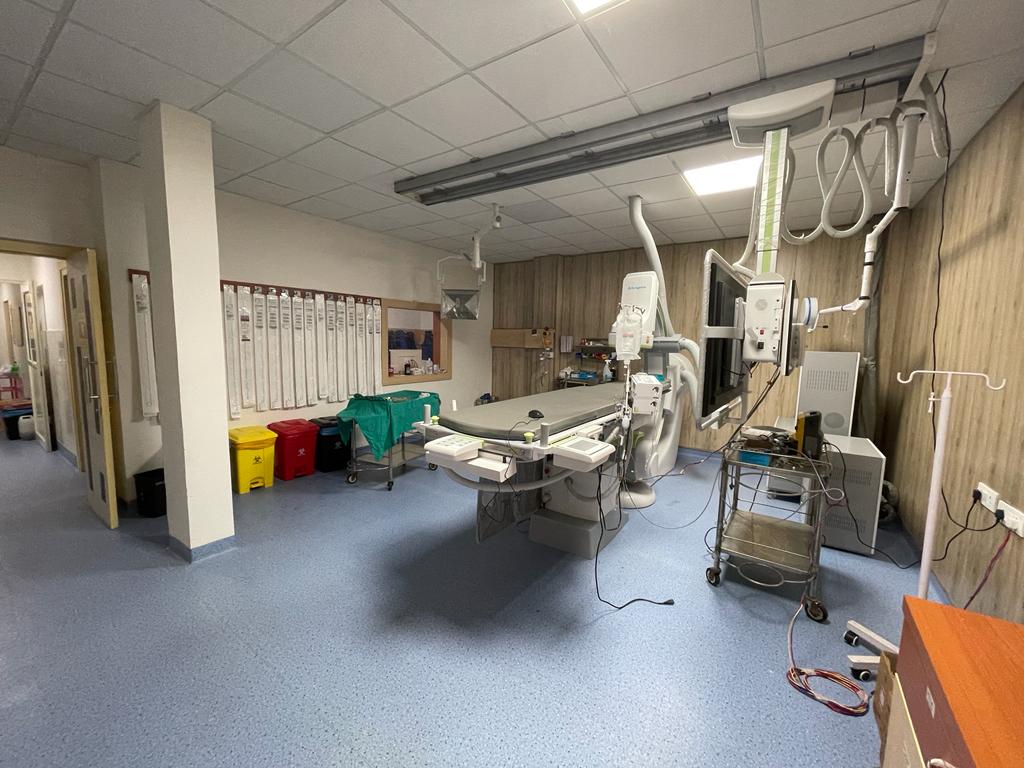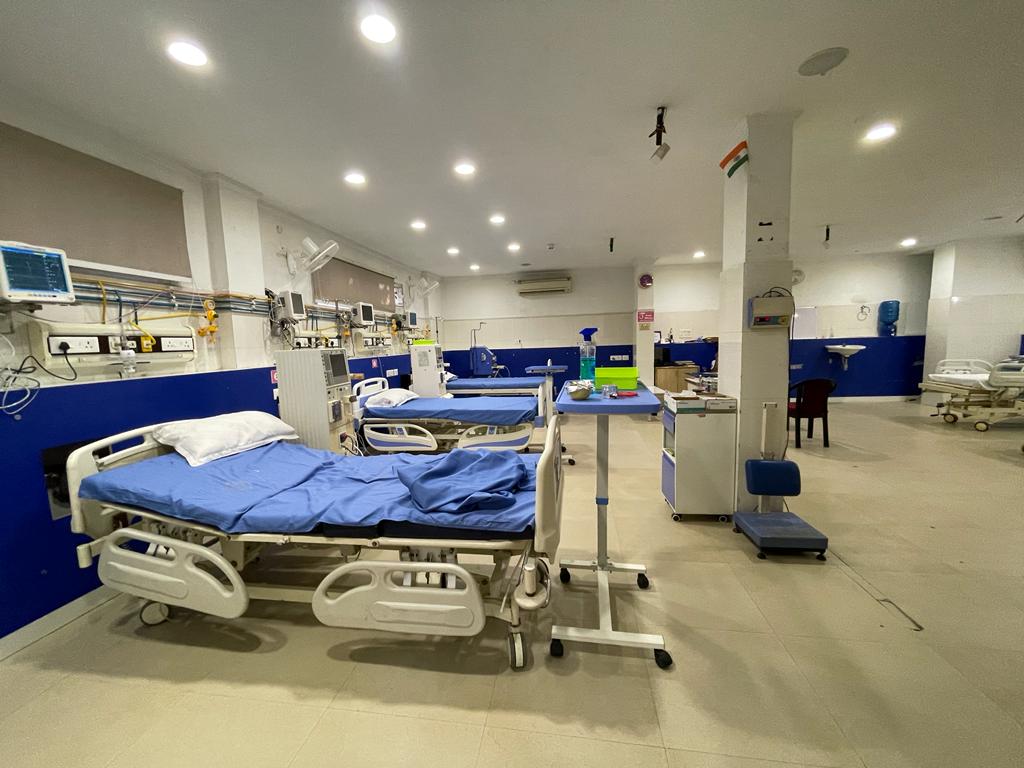Oral Cancer develops in any part of the mouth. It is also called mouth cancer or oral cavity cancer. People addicted to tobacco chewing and smoking are prone to oral cancer. It is also sometimes caused by human papillomavirus.
Oral cancer symptoms can be noticed as white patches in the mouth or as bleeding sores. The oral cavity includes lips, gums, tongue, the lining of cheeks, the roof, and the floor of the mouth.
Types of Oral Cancer
Squamous cell carcinoma (SCC)
Basal cell carcinoma (BCC)
Verrucous carcinoma.
Treatment Of Oral Cancer
Identifying the cancer at an initial stage and the timely treatment can help increase the chances of a complete cure. Early diagnosis is possible by physical examination and biopsy. The treatment plans and support throughout treatment are tailored according to the type of mouth cancer.
Some of the effective oral cancer treatment options are:
surgery
radiation Therapy
chemotherapy
Based on the diagnosis and the stage of affected cancer, your physician might combine these treatment approaches.
When Should I See A Doctor?
Consult our physician if there are persistent symptoms like:
- Chronic mouth sores (do not heal)
- A long-lasting pain in any part of the mouth
- Lump or thickening in the cheek, gum, or tongue
- Presence of red or white patches on the gums, tongue, tonsil, or lining of the mouth
- Irritations in throat
- Difficulty swallowing or chewing
- Painful teeth or jaw
- A drastic change in voice
Cancer affecting the cervix (the lowermost part of the uterus) is termed Cervical Cancer. It is diagnosed more in women and rarely in men. Most cervical cancer is due to the human papillomavirus, a sexually transmitted virus.
Women above 30 years of are advised to undergo pelvic examination at regular frequencies to rule out the chances of cervical cancer.
Types of Cervical Cancer
Squamous cell carcinoma affects the squamous cells lining the outer part of the cervix. It is the most common form of cervical cancer.
Adenocarcinoma affects the column-shaped gland cells lining the cervical canal.
Treatment Of Cervical Cancer
Regular pelvic examination and screenings for cervical cancer (especially for women above the age of 30) can help detect and prevent it. The most important test to identify cervical cancer is the Pap test, also called the Pap smear.
Surgery, radiation, and chemotherapy (or a combination of these methods) are some of the major treatments performed by our oncologists for cervical cancer.
Recovery From Cervical Cancer
With early cervical cancer diagnosis, the survival rate is expected to exceed 91%. Incorporating regular exercises and yoga into your daily routine after surgery, radiation, or chemotherapy will help you achieve a healthy body and lifestyle.
When Should I See A Doctor?
Visit your oncologists if there are:
- Vaginal bleeding after intercourse, between periods, or after menopause
- Unusual menstrual bleeding
- Watery, bloody vaginal discharge with a foul odor
- Pelvic pain or pain during intercourse
Blood cancer (hematologic cancer) is a type of cancer that damages your blood cells. Abnormal proliferation and growth of blood cells affect the red blood cells, white blood cells, platelets, and bone marrow. It occurs generally due to genetic mutations.
Types of Blood Cancer
Leukemia- The cancer starts in the bone marrow and affects the blood and bone marrow. Abnormal white blood cells are produced. It is more common in children.
Lymphoma: It is the abnormal growth of lymphocytes (White Blood Cells) and can affect various body parts.
Multiple Myeloma: The cancer attacks the plasma cells (white blood cells) in the bone marrow. It can adversely affect bones, the immune system, kidney function, etc.
Treatment Of Blood Cancer
To combat blood cancer, our hospital provides the following treatment approaches.
Chemotherapy
Radiation Therapy
Stem Cell Transplant
Targeted Therapy
Immuno Therapy
To overcome the challenges of blood cancer, affected individuals must undergo regular follow-up and monitoring throughout the treatment process.
Recovery From Blood Cancer
The chances of remission and recovery are higher when the disease is diagnosed early, and the right treatment is administered.
When Should I See A Doctor?
Schedule an appointment upon seeing the following signs
- some abnormalities in the blood are noticed
- unexplained weight loss
- fatigue
- bone pain
- frequent infections
Although spinal cancer can occur in anyone, it is a rare tumor. Affected individuals can experience lifelong disabilities. Spine cancer can develop in various parts of the spine, including cartilage, spinal discs, spinal cord, vertebrates, etc.
Tumors in the spine or the spinal cord can develop in two ways. One is the primary tumor that is localized to its site of origin. The other is the secondary tumor that spreads from other parts of the body to the spine. In both cases, spine cancer can be life-threatening if it has advanced to later stages.
Types of Spine Cancer
Intradural Tumors are abnormal growths forming inside the protective covering of the spinal cord and brain called dura.
Vertebral Tumors are abnormal growths occurring in the spine’s bones, the vertebrate.
Treatment Of Spine Cancer
Powered by clinical excellence and skilled specialists, Ujala Cygnus Varanasi provides patients with exceptional cancer care and treatment options.
To decide on the best treatment for a spinal tumor, MRI, CT, or nuclear medicine bone scans and a biopsy may be performed. Additionally, spinal tap procedures may also be conducted.
Surgery is the first treatment choice for spine cancer despite associated risks. Radiation therapy and chemotherapy will also be used if the tumor has progressed to a later stage,
Recovery From Spine Cancer
The recovery process from spinal surgery may require several weeks. There may be temporary loss of sensation or nerve damage near the area affected by the tumor with complex cases.
Supportive care therapies and rehabilitation programs can effectively manage side effects and pain associated with spinal cancer and its treatment.
When Should I See A Doctor?
Look out for the following symptoms:
- Pain in neck and back that spreads to other parts of the body
- Loss of sensations
- Muscle weakness
- Loss of bowel and bladder control
- Paralysis














